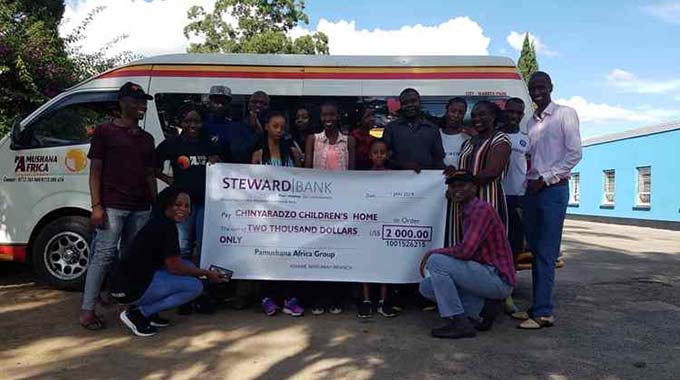Children’s home with a difference

Leroy Dzenga
Many shelters and children’s home have a dormitory structure, a system which has since been questioned by child psychologists across the world. Writers on child care have long criticised crowded dwellings, arguing that they have a negative effect on the children’s physical and mental health.
Dr Petra Roberts, whose writings on social work focuses on child welfare, says the global drift toward remodelling shelters for children under care, is critical to their well-being.
“As a result of the concerns about the effects of institutional care on children and following trends in the developed world, there is a movement in developing countries to replace large residential institutions with a system of adoption, foster care and small group homes,” writes Dr Roberts.
In Zimbabwe, a children’s home has broken from the old method of child care, pursuing an approach that has elements of a family unit.
Established as a temporary shelter in 1962, Chinyaradzo Children’s Home, has grown to be among the most prominent care centres in the country.
Their approach is different, they place emphasis on a family like structure as is considered to be best practice across the world.
They have housing units, not different from conventional residential setups. Within that unit, are children who live with caregivers who play the active parenting role. Parents play the same roles that any parent who stays with children is expected to undertake.
The children are raised with family values, special attention being given to every child, identifying their strengths and weaknesses.
Unlike other centres where to some extent, a degree of isolation, Chinyaradzo allows children who are not under their care to attend their daycare centre.
This is proven to be a way to enhance social inclusion among kids under care.
Run at the benevolence of well-wishers, Chinyaradzo has been facing challenges in the wake of recent economic events.
Uniform price hikes and commodities have made their operations harder as the money’s buying power has been eroded.
“Our budget for foodstuffs and uniforms has grown by 100 percent. As it stands, some of our children may start the new term in their old uniforms as we make plans to acquire new ones for them. It is not as easy as it was before,” an official from Chinyaradzo said.
On January 1, local transport operator Pamushana Africa donated $2 000 to the facility. The money was raised through donations and the company doubled what their patrons had put together.
Pamushana Africa Director Mr Hardlife Chipika encouraged businesspeople and individuals to help ensure sustenance of children’s homes across the country.
“We are all supposed to play a part in ensuring that places like Chinyaradzo Children’s Home stay afloat. If corporates across the world could find a way to help children’s homes and care centres of their choice, we could make a difference,” he said.
Orphaned, abandoned children find their way to children’s homes, they are given a warm shelter until they reach discharge age which is usually 18.
It is at this critical point that good methods of nurturing need to be employed and Chinyaradzo has been leading from the front with their family-like approach.







Comments